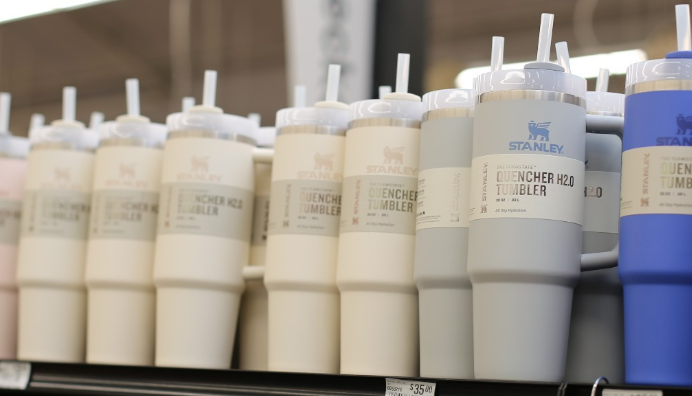
In the past year, it has been almost impossible to walk around a college campus, browse through the aisles at a store or scroll on social media without seeing a Stanley cup. The 40-ounce Quencher tumblers have become instantly recognizable for their variety of colorways and acclaimed for their promise to keep water ice-cold for more than 24 hours.
Originally released in 2016, they seemed to gain overnight popularity across social media platforms in 2023. This instant popularity seemed innocent at first, a fun way to be sustainable and stay hydrated. However, recently, the Stanley cup craze is beginning to look more like rampant overconsumption rather than a part of a resolution to be more environmentally conscious and drink more water.
At the beginning of the year, Stanley released a collection of their iconic tumblers with Target, as a part of their “Galentine’s” collection. The release of the hot pink edition of the tumbler immediately grasped the attention of loyal Stanley buyers.
Videos of people waiting outside of Target stores overnight and rushing into the store, pushing and shoving other customers, went viral across TikTok and other social media platforms. Many of these same people fighting in lines at Target and getting into fights over the tumblers already have a Stanley cup, oftentimes multiple.
TikTok creators have posted videos showcasing their collection of the tumblers, and the numerous kitchen cabinets dedicated to storing them. Customers’ desperation to get their hands on the latest edition of the Stanley tumbler has resulted in extremely high resale prices. Cups are being listed for hundreds of dollars on resale sites like StockX and Ebay, excessively higher than the original $45 listing price for the 40-ounce Quencher.
Admittedly, I do own a Stanley cup and am a strong proponent of the “emotional support reusable water bottle” trend. The idea behind owning a reusable water bottle like the Stanley is completely respectable. I myself purchased my Stanley with the justification that I will feel compelled to drink more water if it’s out of a fun cup.
The notion of implementing more sustainable practices into daily activities is something I find very important. I think that if possible, everyone should try to make sustainable choices such as using a reusable water bottle like the Stanley to reduce plastic waste. With that being said, I think that the hysteria surrounding the Stanley tumblers has gone too far in the wrong direction and is defeating the purpose of a reusable water bottle itself and the goals of sustainable practices.
The intentions behind purchasing a Stanley are no longer to actively be more environmentally conscious or to increase one’s daily water consumption. The motivation behind continuing to buy Stanley cups has evolved into just growing a collection of them to be able to show off. Of course, trends are unavoidable, and there will always be something that becomes viral across social media and sees an insane surge in sales.
Also, this is not to say that collecting items in general is a bad thing. It is always fun to find something that interests you and collect things related to it. However, I do think it is important to recognize the faults of the maximalist mindset of over-purchasing, especially when it comes to sustainability and the environmental consequences of mass production.
With the Stanley cups especially, I think the trend may have been taken too far. Environmentalism aside, no one should ever get into a physical altercation at a Target over a water bottle.
mkane10@ramapo.edu
Featured photo courtesy of Generalstorespokane, Instagram






